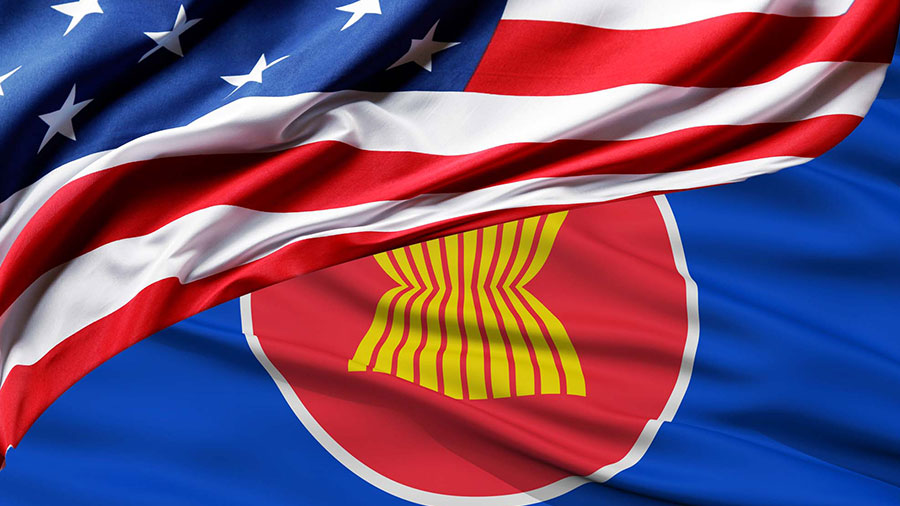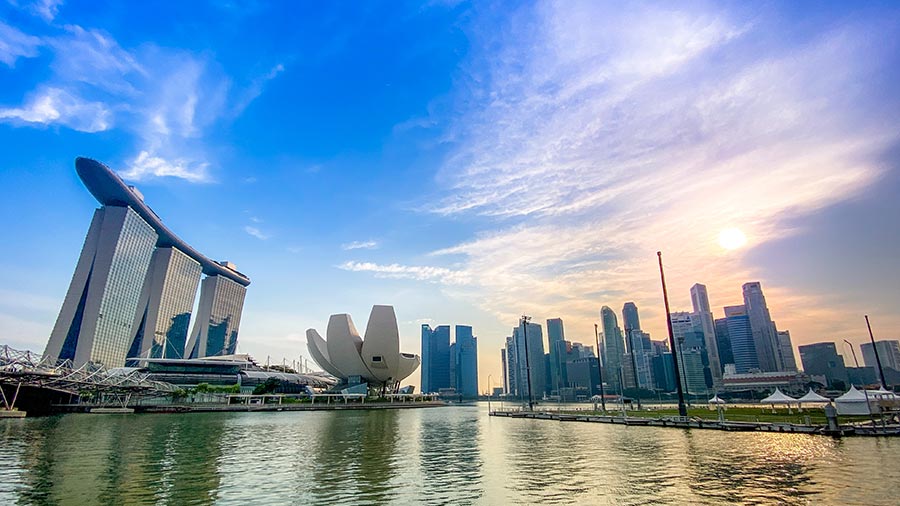Kamala Harris Trip to Singapore & Vietnam Spell Out Washington's Preferred China Plus One Options
By Bob Savic, Senior Consultant with Dezan Shira & Associates
The US Vice-President, Kamala Harris, is on a whistle-stop tour of Southeast Asia visiting Singapore and Vietnam. The aim of the diplomacy is in building relations with what is becoming the world’s most strategically important economic region, not only for the United States but also for China.
Harris has taken on a high-profile foreign policy role in expanding relations with Singapore and Vietnam, based on various shared economic, political, and security interests. While the former country has been a longstanding US partner based largely on decades of strong investment and trade cooperation; the latter has become Washington’s most recent regional partner-driven in part by shared geopolitical concerns surrounding China’s overlapping claims in the South China Sea. Notably, Harris’s partnership-building in the region comes only a month after US Defense Secretary, Lloyd Austin, visited both countries, as well as the Philippines, in discussing regional military cooperation.
Economic relations between the US and Singapore, Vietnam
Trade relations between the US and the two countries have been especially vibrant over the last couple of years, even in the face of the global pandemic. This likely accounts for one of the reasons behind Harris’s visit to these Southeast Asian countries.
The more established trade relations are naturally between the two established partners, the US and Singapore. According to the US Trade Representative (USTR), the city-state is its 17th largest trading partner with around US$60 billion in bilateral trade each year, typically resulting in a US$4 billion surplus in favor of Singapore. In 2020, US imports from Singapore were just over US$31 billion, up from around US$26.5 billion in 2019.
By contrast, US exports to Singapore fell in 2020 to US$27 billion, down from US$31 billion in the prior year. The bulk of trade is in the form of electrical and mechanical machinery, as well as pharmaceuticals and refined mineral oils. Given the sizeable level of foreign direct investment (FDI) in Singapore, amounting to US$288 billion in 2019, much of that trade is accounted for by intercompany transactions between US affiliates based in both countries.
By stark contrast to Singapore, total US FDI in Vietnam only stood at US$2.6 billion in 2019. In fact, FDI had decreased by -8.2% from the previous year. Yet, the level of US imports from Vietnam was much higher than even in relation to Singapore, reaching a record high of US$84 billion in 2020, up from roughly US$70 billion in the preceding year. The vast bulk of imports are made up of electrical and mechanical machinery, but also household furniture and bedding. Given that US exports to Vietnam average a comparatively diminutive $10 billion per year, the US trade deficit with the country has been ballooning these last couple of years, reaching a record high of US$-73 billion in 2020, up from US$-58 billion in 2019.
Cybersecurity, climate, and health partnerships
On the first leg of the vice president’s regional tour, Harris’s discussions with Singapore’s Prime Minister, Lee Hsien Loong, involved agreements in the joint development of cybersecurity. This included an accord on institutionalizing cooperation in cyberspace between the defense establishments of both countries. Further agreements were made in relation to sharing best practices and the development of critical technology, data security, and infrastructure protection. An important aspect of the re-invigorated US and Singapore relationship will involve a new climate partnership which is expected to set out cooperation on environmental governance including sustainable development, low carbon solutions, and green economy sector employment.
The discussions between Harris and Lee also covered the promotion of digital trade and cooperation in the adoption of international standards covering emerging technologies such as artificial intelligence and blockchain, health partnerships in pandemic control, and medical support promising increased rollouts of US-made vaccines.
Indeed, the offer of tens of millions of doses of US-made vaccines to various Southeast Asian countries, before Harris’s official visit to the region, had been received with welcome relief by ASEAN governments. The Delta variant of the coronavirus has significantly impacted the region’s ability to cope with the negative health effects, including intensive pressure on hospitals given the low levels of vaccination across most countries with the notable exception of Singapore. Protests have erupted across Southeast Asia as the leaders of several countries were blamed for poor policy responses to the latest wave of the pandemic, an outcome which prompted the recent resignation of Malaysian premier, Muhyiddin Yassin.
Critically for the region, the economic dislocation reverberating from the re-imposition of lockdowns, and on a broader scale than during the first such measures last year, has seen widespread closures of factories and production facilities. Back in 2020, Southeast Asia’s burgeoning manufacturing centers benefited from a regional export boom, at the time, as Western economies underwent a consumption surge resulting in record imports of household goods and essential protective health equipment from the region.
In these contexts, Kamala Harris’s high-profile diplomatic forays to Singapore and Vietnam, amid the US administration’s other recent engagements with the region, involving the provision of defense, health, and other cooperation, has become the centerpiece of an overall and ambitious economic policy in supporting Southeast Asia to become a major manufacturing supply chain alternative to that of China.
Supply chain management
According to the Centre for Strategic and International Studies (CSIS), the global Covid-19 pandemic and the intensifying strategic rivalry between the US and China have amplified the need to restructure America’s global supply chains. During the period of the Trump administration, some of these policies involved the concepts of ‘reshoring’ or ‘onshoring’, which typically included the provision of incentives for American companies to relocate offshore production, mainly from China, back to mainland US. Other strategies also involved ‘near-shoring’, whereby US companies would be encouraged to set up in neighboring countries, such as Canada or Mexico, to make use of relatively lower production platforms than in the US while securing free trade benefits arising from the Trump negotiated USMCA agreement.
Most American supply chain strategies implemented during the Trump years did not see significant repatriation of US companies from their production centers in China. As an alternative to these programs, the Biden administration has been increasingly exploring the merits of a “China + 1” strategy.
Expanding the China + 1 strategy
The China + 1 strategy involves US companies with a manufacturing presence in China also set up a production base in Southeast Asia given that the region is unlikely to be able to wholly replace China in the near to medium term. Nevertheless, by setting up a suitable and dependable alternative in an ASEAN economy, it is anticipated that the US government may be in a stronger position to influence its business community to increasingly relocate out of China into ASEAN.
One successful example of the so far limited China +1 strategy has been in the international trade of electronics, wherein in 2019, US imports of these products from China fell, whereas purchases rose from Southeast Asian economies such as Malaysia, Thailand, the Philippines, Indonesia. Although these economies have been significant recipients of US private investment, they have fallen short of being able to completely absorb the relocation of US companies operating in China over many years.
Even so, the Biden administration foresees that more investment in Southeast Asia could speed up a shift in manufacturing fabrication and assembly relocations from China. US investment in education and training would also support increased efficiency and worker skills in the region. A China + 1 strategy may not only undertake these actions but correspondingly lay the groundwork for negotiations with ASEAN’s member states to reduce political and economic barriers and thereby further encourage US businesses to move more supply chain operations into Southeast Asia.
In line with this strategic repositioning, Harris has extensively discussed supply chain issues with Singapore’s prime minister during their bilateral meetings. Significantly, the talks were couched within the framework of enabling supply chain resiliency and security within the context of pandemic management, rather than involving Singapore as an intersection point in US-China geopolitical rivalry. As a sign of the importance of the issue, also present at the meetings was US-based semiconductor manufacturer, Global Foundries Inc, which plans to construct a US$4 billion plant in Singapore in 2023.
Further talks on supply chains are expected to emerge during Harris’s meetings with Vietnamese officials in the second half of her trip. Certainly, in anticipation of this, Vietnam may be the region’s clear favorite in a China + 1 strategy: benefiting from low labor costs - effectively half those in China - while advancing on skills and efficiency. Additionally, the Vietnamese government has undertaken expansive infrastructure investments such as in major roads, ports, and electricity grids over the last decade. For US companies, Vietnam also provides a growing and youthful domestic market, while becoming a potential security partner for the US with shared interests in the South China Sea.
America’s new soft power approach for ASEAN
A China + 1 strategy of investing both in China and one or more countries in Southeast Asia is likely to become one of the most practical measures by which to promote and secure US national interests. Accordingly, the Biden Administration appears to have calculated that the provision of aid and expertise, in a diverse range of supportive activities to Southeast Asian governments and businesses, will likely ensure that the US maintains its political relationships with partners there, essentially through the application of soft power while encouraging regional defense and security structures.
Harris’s mission to Southeast Asia is therefore as much about developing Southeast Asian economies’ supply chain capacities to enable US companies to more effectively select local corporate partners without solely relying on China, as it is about fostering a climate, health, and other partnerships within the region. International investors and businesses can probably expect the American government’s renewed emphasis on its soft economic power, particularly in ASEAN, to bring significant benefits over the coming years.
Dezan Shira & Associates have a strong presence in ASEAN and China, with offices throughout the region, including 13 in China, and Hong Kong, in addition to three in Vietnam, an office in Singapore, two in Indonesia, in addition to the Philippines, Thailand, and Malaysia. We have handled several billion dollars of US investments into the region on behalf of North American SMEs and midcap businesses. Please see our publications below for in-depth analysis or contact us at ASEAN@dezshira.com for assistance.









